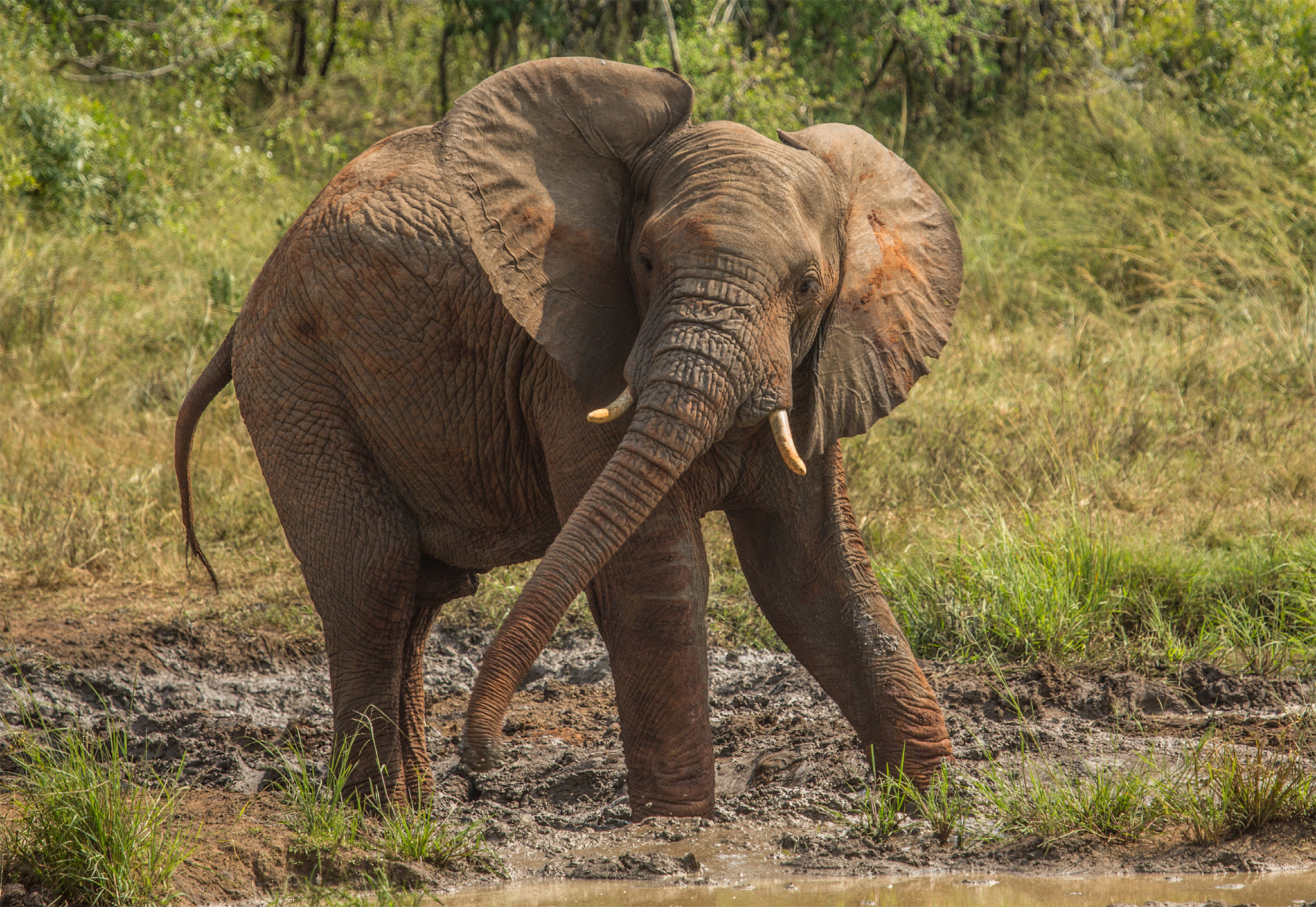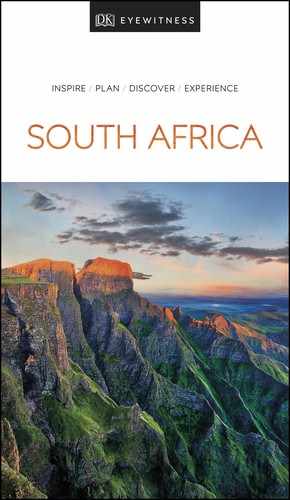In 1895 two wildlife reserves, Hluhluwe and Imfolozi, were established to protect the last rhinos in South Africa. A corridor of land was added between the two in the 1950s. The park was consolidated in 1989, and now sprawls across 964 sq km(372 sq miles).
In 1958 a single male lion suddenly appeared, possibly from the Kruger National Park some 350 km (220 miles) to the north. Two lionesses were relocated from Kruger some time later, and their offspring have re-established prides throughout the park. The reserve’s hilly terrain provides great vantage points for viewing.

t Which is also home to a large zerba population
20,000
southern white rhinos are estimated to exist in the wild worldwide.

Insider Tip
A Room with a View
The reserve’s Hilltop Camp (hilltopcamp.co.za), set at an altitude of 450 m (1,460 ft), offers panoramic views and can accommodate up to 210 guests in its rustic, self-catering chalets. Facilities at the central complex include a restaurant, bar, shop, petrol station and a swimming pool, perfect for cooling off beneath the blazing African sun.
Exploring the Park

t A young African elephant spraying mud on his body as protection from the sun
Nyalazi Gate, the park’s main entrance, is reached from the N2 at Mtubatuba. It is a perfect starting point for exploring the park’s 220-km (138-mile) road network. Heading south, the route traverses open woodland before fording the Black Imfolozi River. Then it ascends to the magnificently located Mpila Camp. A trio of exclusive reed-and-thatch rest camps on the banks of the Black Imfolozi, Sontuli, Gqoyeni and Nselweni rivers allow visitors to savour the most secluded corners of this wilderness. Seasoned game rangers conduct game-viewing walks.
From Nyalazi Gate north, the route follows a tarred road that curves across rolling hills teeming with wildlife. The journey to Hluhluwe climbs a range of hills, 400 m (1,300 ft) above the Hluhluwe River. These hills trap moisture-laden clouds, resulting in an average rainfall of 985 mm (38 inches) per year. In the dense woodland and forests live red duiker, bushbuck, nyala and samango monkeys. Buffalo, zebra, white rhino and elephant can be seen roaming the northeastern grasslands near Memorial Gate. Parts of the reserve’s forest are also excellent for bird-watching.
Rhino conservation
In 1916, Hluhluwe-Imfolozi’s southern white rhino population was at a low of 15–30. Amazingly, this group were progenitors not only to the 1,600 individuals now roaming the reserve, but also – thanks to a 1960s translocation programme – to every white rhino population worldwide. Indeed, despite ongoing poaching, the southern white rhino is now listed as Not Threatened by the IUCN.

